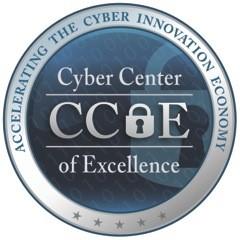NICE eNewsletter Fall 2021 Industry Spotlight
San Diego’s Special Sauce: Collaborative Cybersecurity and Workforce Development
By Lisa Easterly, President and CEO, San Diego Cyber Center of Excellence

The cybersecurity industry continues to grow by leaps and bounds – even in an economy hit hard by the pandemic. Growth in remote working, distance learning, and connected devices has created new security risks that are propelling next-generation capabilities like artificial intelligence (AI) and machine learning (ML). We see this particularly in San Diego, where the strong defense sector and emergent technologies are accelerating local job growth.
Productivity in the cybersecurity cluster has grown 7.5 percent since 2018, nearly triple the average for all San Diego industries. AI has helped mitigate chronic labor shortages by increasing employee productivity with automation of repetitive tasks. To identify, escalate, and resolve cyber threats, local cybersecurity firms are developing AI at a rate three times the regional average, according to a recent survey, Securing the Future: AI and San Diego’s Cyber Cluster Study, commissioned by the San Diego Cyber Center of Excellence (CCOE) and the San Diego Regional Economic Development Corp. More than 40 percent of the survey respondents agreed that AI has boosted the demand for workers, and three in five said they will need to hire additional cybersecurity workers—including AI specialists—in the next 12 months.
Fostering Tactical-to-Practical Collaboration
San Diego is already home to more than 870 cybersecurity firms. Leading the demand for their business is the U.S. Navy’s Naval Information Warfare Systems Command (NAVWAR), whose presence in the region not only attracts talent but also spurs new company creation and R&D with billions of dollars spent annually on developing and securing critical Navy systems. The cyber industry now accounts for more than 24,000 jobs—including 12,400 cybersecurity-specific roles—and has a total economic impact of $3.5 billion annually. And the best part is that every cybersecurity job generates another job in other industries in the region.
Nearly three in five local cybersecurity firms work directly or indirectly for the federal government, including the Department of Defense, and 32 percent focus exclusively on fulfilling federal contracts. Defense contracts are typically big, multiyear investments that provide stability to San Diego’s cybersecurity cluster and drive investments in talent and R&D.
To enable greater collaboration among all these employers, CCOE convenes the military and intelligence community, high-tech industries, academia and the region’s government, municipalities, utilities and transportation agencies to foster a more secure cybersecurity environment, cultivate the cybersecurity workforce, and accelerate cutting-edge technology and solutions.
“CCOE brings a fresh approach to collaborative cyber resiliency and workforce development, creating scalable templates to mobilize other regions in our state,” said Eileen Sanchez, CASCADE & CADENCE Director at the California Governor’s Office of Planning and Research.
Developing a Diverse Workforce
Adoption of new technology like AI is just one way to tackle the growing talent shortage. Another way is to address the workforce diversity challenge. With women and minorities accounting for only about a quarter of the cybersecurity workforce, CCOE and San Diego’s cybersecurity industry are addressing the diversity challenge directly. Programs include development of a cybersecurity autism training and internship program with the National Foundation for Autism Research; an apprenticeship/student employee program with NAVWAR, cybersecurity employers, and San Diego’s community colleges to engage under-represented students; cybersecurity awareness and career workshops with the Girl Scouts and SynED; and the launch of CyberHireSD with the San Diego Workforce Partnership to help under-employed workers join the field.
Looking at this talent pipeline problem on a long-term basis, San Diego’s cyber community also sought to provide information and resources for prospective workers. CCOE partnered with the State of California, Journeys Map, San Diego East County EDC, and industry leaders to develop the Cyber Career Map, featuring customized career pathways based on the NICE Workforce Framework for Cybersecurity. Similar to Google Maps, the Cyber Career Map enables users to create personalized journeys catering to their skills and interests, including education, certifications, and work-based learning resources as well as military to commercial tracks.
While the threat landscape and defenses are ever-evolving, one constant of war remains . . . you can’t go it alone. Since cyber threats have no geographic or industry bounds and the need for qualified cybersecurity workers is increasing, the hope is for San Diego to serve as a template to mobilize other regions. Together, we can connect the dots on best practices and grow our nation’s cyber warriors, defenses, and innovations.

